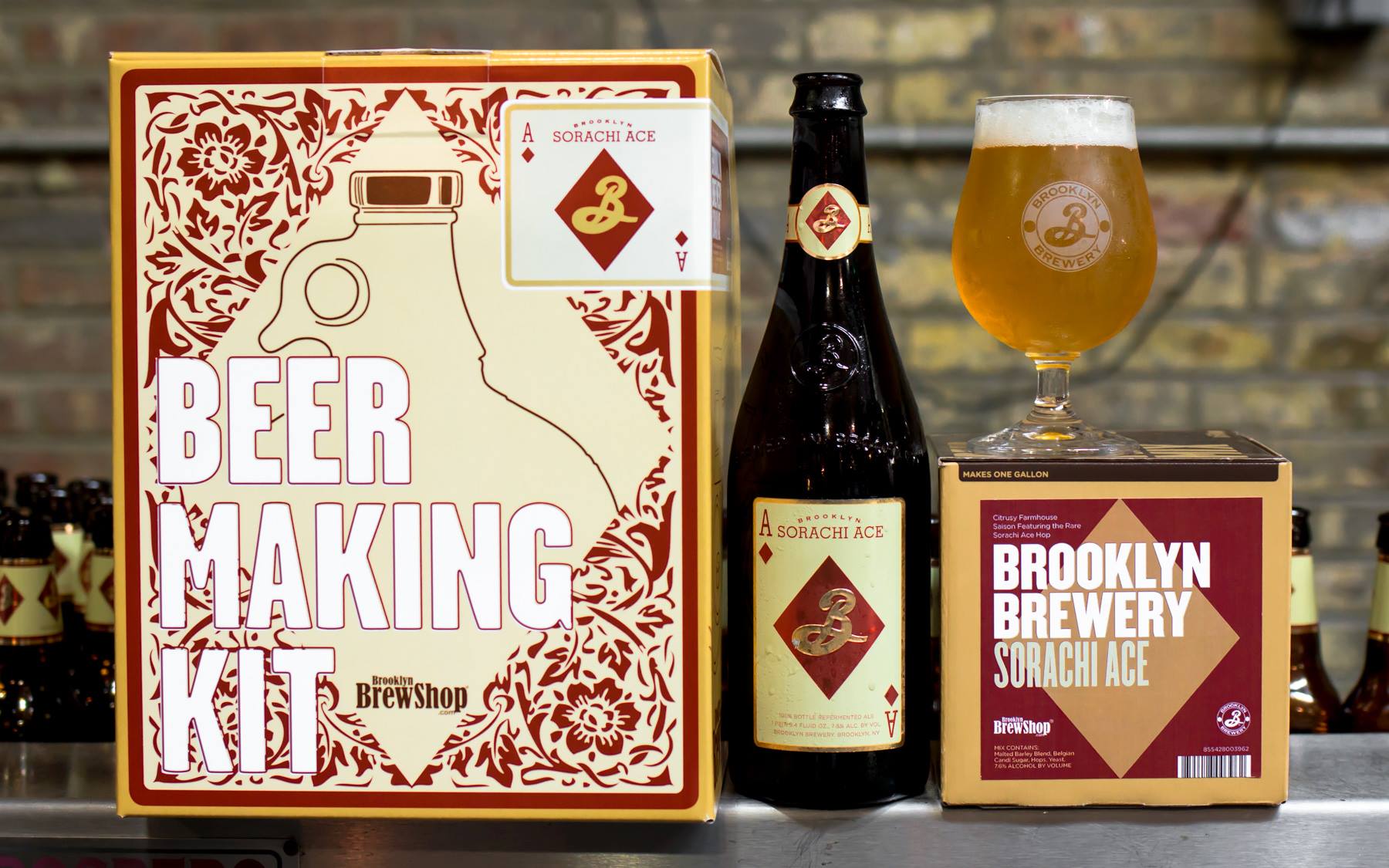
Sorachi Ace is one of the most popular and highly rated beers made by Brooklyn Brewery. The namesake hop, originally developed in Japan for Sapporo Breweries in the 1970s, gives this dry, effervescent saison its distinct lemony aroma.
The beer debuted in 2009, which is the same year Stephen Valand and Erica Shea started the Brooklyn Brew Shop. Their company, based in DUMBO, makes and sells gallon beer-making kits “to get space-strapped New Yorkers brewing,” according to its website. The couple mainly designs custom recipes for the kits, but also collaborates with breweries to offer stovetop-scale recipes and ingredients of commercial beers they like to drink. This currently includes Evil Twin’s Bikini Beer and BrewDog’s Punk IPA, while the latest — a DIY take on Sorachi Ace — is set for a September 18 release.
We chatted with Brooklyn Brew Shop founders Valand and Shea to learn more.
Edible Brooklyn: Do you remember the first time you drank Sorachi Ace?
Stephen Valand: It was actually at Edible‘s Good Beer, back in 2009.
Erica Shea: We heard whispers that Garrett [Oliver, Brooklyn Brewery’s brewmaster] was pouring a saison made with a rare Japanese hop named Sorachi Ace that we had to try. From the first sip we were smitten. Saisons are one of our favorite styles and the lemon aroma was amazing.
SV: It tasted like nothing we’d ever had.
EB: How did the idea to make a Sorachi Ace kit come about?
ES: We’ve worked with Brooklyn [Brewery] in some capacity for years. We’ve taught classes in their tasting room…
SV: A few years ago they actually asked us to turn one of their original recipes from Steve Hindy, the brewery’s founder, into a kit. That was our first foray into creating collaboration kits with breweries we love and respect.
EB: What beer was that?
SV: Hindy’s Chocolate Stout — great beer. It’s what, in many ways, started it all for Brooklyn Brewery. He brewed it because he was dissatisfied with the beer available during his time working and living in the Middle East. It’s very dark and super-rich. On the beer spectrum, it’s about as far as you can get from Sorachi Ace.
EB: What makes Sorachi Ace a great kit beer?
ES: It’s both incredibly simple and deceptively complex. It’s really light in body and flavor, but it’s pretty high in alcohol. It’s also quite hoppy but not at all bitter.
SV: Whether you’re picking up a bottle from the store or tasting your first homemade batch, we love how it’s a classically dry European-style saison hopped in a way that’s never been done. Sorachi Ace, the hop, is super herbaceous, peppery and lemony. It accentuates all the characteristics you love in a saison — especially its ease in pairing with food.
EB: How was working with Garrett to create the kit?
SV: Garrett is as much a staple in the local brewing scene as there’s ever been. He’s informed so much of what we’ve come to understand as American-style craft beer. When we expressed interest in doing it, he was initially protective; rightfully so, it’s his baby. But he gave us the recipe and complete access to their brewers so that we could get this beer just right. We’re really grateful.
EB: How much testing did you do to make sure the recipe was scaled correctly?
ES: We did around ten test batches dating back to the spring to get the ratios perfect. We’re using the same exact grain and hops in our kits that the Brooklyn Brewery uses.
SV: A brewery’s system reacts a bit differently than a six-quart pot on a stove. A thermometer, strainer and funnel might feel pretty scientific at home, but compared to the bells and whistles found in most brewhouses, they’re quite simple. So we had to adjust the process to work flawlessly on the average stovetop.
EB: What influences you to pick a beer to kit?
SV: We work with breweries and brewers that we really admire and think are doing something totally new. With Evil Twin, we already wanted to make a super-light, low-in-alcohol, fresh-tasting beer and we loved their Bikini Beer, so it was the natural choice. With BrewDog, their Punk IPA is just so good. It’s intensely juicy and aromatic, and it’s their flagship beer. It’s everything they stand for, so it was an honor to be allowed to help people recreate something so dear to them.
EB: What’s the most challenging part of creating a kit?
ES: Breweries have a lot of technology that you don’t have at home. But luckily most of it isn’t needed to make great beer in your kitchen. A fine mesh strainer won’t get quite as much hop and grain sediment out of your beer than a commercial filter will, so your beer may be just a little darker or cloudier than a store-bought example of the same beer. Otherwise, nothing’s too difficult. Brewing and testing recipes is truly the most fun part of our job.
SV: And we want that fun to carry over to the homebrewer. We want people to know that the next great beer they drink can be their own. The best brewers in the country often started brewing at home.



